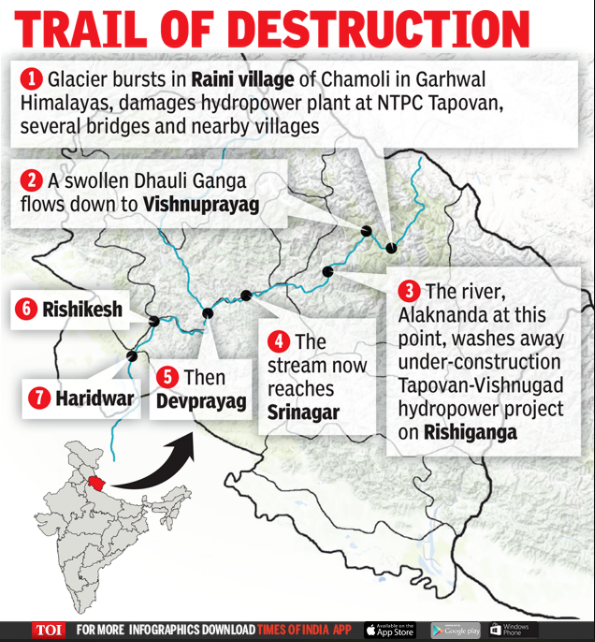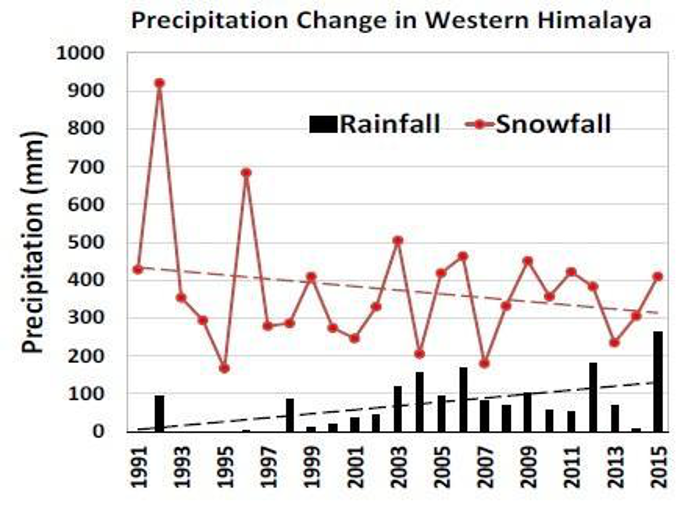
Glacial Burst
In News: Recently, a glacial burst on Nanda Devi has triggered an avalanche and caused flash floods in Rishiganga and Dhauliganga rivers in Chamoli district of Uttarakhand.

Major Points:
- It washed away at least two hydroelectric power projects, the 13.2 MW Rishiganga hydroelectric power project and 520 MW NTPC Tapovan-Vishnugad project (also known as Rishi Ganga Project) on the Dhauliganga river, a tributary of the Alakananda.
- Possible Causes:
- A part of the Nanda Devi glacier, which broke off and collapsed in the lake, which surprisingly occurred at the edge of the winter season.
- Satellite and Google Earth images do not show a glacial lake near the region, but there is a possibility that there may be a water pocket in the region.
- Water pockets are lakes inside the glaciers, which may have erupted leading to this event.
- Satellite and Google Earth images do not show a glacial lake near the region, but there is a possibility that there may be a water pocket in the region.
- Environmental experts have attributed the glacial melt to global warming and climate change.
- Climate change has driven erratic weather patterns like increased snowfall and rainfall, warmer winters have led to the melting of a lot of snow.
- The thermal profile of ice has been increasing. Earlier, the temperature of ice ranged from -6°C to -20°C and now it is -2°C, making it more susceptible to melting.
- The average temperature in the northwestern Himalaya has risen by 0.66°C since 1991 (an increase much higher than the global average).
- The higher Himalaya became even warmer on average in the same period.
- A part of the Nanda Devi glacier, which broke off and collapsed in the lake, which surprisingly occurred at the edge of the winter season.

(Image Courtesy: The Wire)
- Concerns:
- According to the UN Intergovernmental Panel on Climate Change (IPCC), glacier retreat and permafrost thaw are projected to decrease the stability of mountain slopes and increase the number and area of glacier lakes.
- Also, the number and area of glacier lakes will continue to increase in most regions in the coming decades. Consequently, new lakes will develop closer to steep and potentially unstable mountain walls where lake outbursts can be more easily triggered.
- Environmentalists have always warned against the construction of dams as there is always a chance of flooding in the eco-sensitive Himalayan region.
|
Glacial Burst:
Avalanche:
Flash Floods:
Nanda Devi Glacier:
Dhauliganga and Rishi Ganga:
Major Natural Disasters in the Region:
(Image Courtesy: The Hindu) |
Previous article
Sri Lanka settles $400 mn currency swap with India
Next article
Internet Shutdowns
